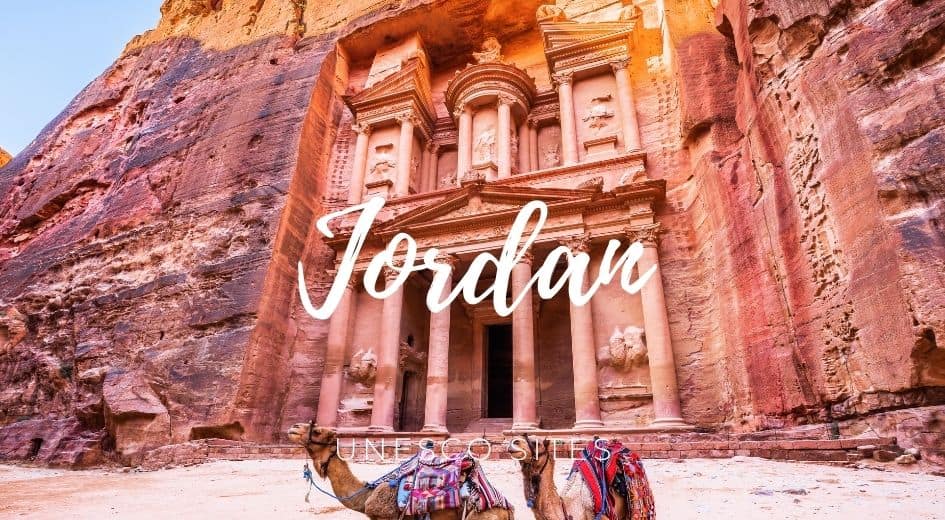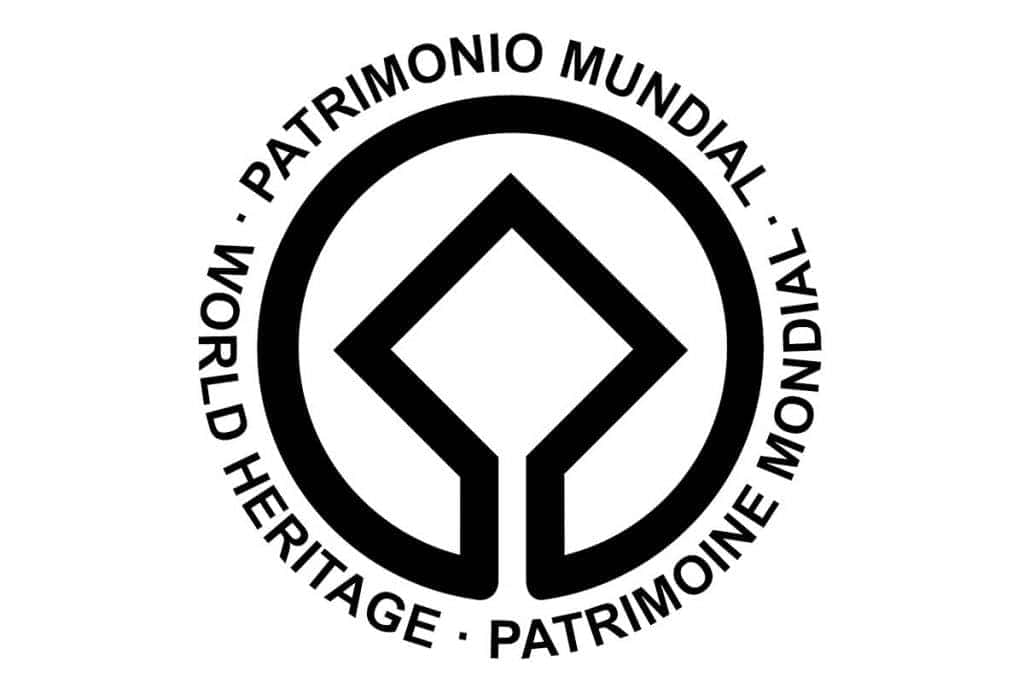Table of Contents


Jordan UNESCO has registered 6 sites on the World Heritage list and 15 on the tentative list.
Some places are so interesting that it’s relevant to keep them for future generations. This is why UNESCO has built a list of crucial classified properties in which superb places stand out for their aesthetic, natural, artistic, or cultural significance.
More than a thousand places are registered as Unesco’s World Heritage worldwide. Due to my interest in visiting World Heritage sites, I compiled the UNESCO list in Jordan and the corresponding map.
Jordan UNESCO list
- As-Salt – The Place of Tolerance and Urban Hospitality
- Baptism Site “Bethany Beyond the Jordan” (Al-Maghtas)
- Petra
- Quseir Amra
- Um er-Rasas (Kastrom Mefa’a)
- Wadi Rum Protected Area
Jordan UNESCO Map
Click on the blue pins to view more relevant information about each World Heritage site in Jordan.
Description
- As-Salt, also known as “The Place of Tolerance and Urban Hospitality,” is a historic town in Jordan that dates back to the Ottoman period. It is known for its well-preserved 19th-century architecture, including traditional houses and buildings constructed with locally sourced materials such as stone and wood. As-Salt was an important trading and cultural center during the 19th century, and its architecture reflects a blend of Ottoman, Levantine, and local styles. The town is also known for its vibrant arts scene, with numerous galleries and cultural events throughout the year.
- The Baptism Site “Bethany Beyond the Jordan” is located on the east bank of the Jordan River and is believed to be where Jesus was baptized by John the Baptist. The site features several churches, a monastery, and numerous archaeological remains from the Roman and Byzantine periods.
- Petra is an ancient city in southern Jordan and a UNESCO World Heritage Site. The city is known for its impressive rock-cut architecture and water management systems, which allowed its inhabitants to thrive in a harsh desert environment. Petra was the Nabataean Kingdom’s capital and an important center of trade and commerce during the Hellenistic and Roman periods.
- Quseir Amra is an 8th-century desert castle located in eastern Jordan. It is known for its well-preserved frescoes depicting hunting scenes, mythical creatures, and historical figures. The Umayyad Caliphate built the castle used as a hunting lodge and retreat for members of the ruling class.
- Um er-Rasas, known as Kastrom Mefa’a, is an archaeological site in central Jordan. It contains the ruins of a Byzantine-era fortified town, which includes several churches with well-preserved mosaic floors. The town was an important center of Christianity during the Byzantine period.
- Wadi Rum Protected Area is a desert wilderness located in southern Jordan. It is known for its striking red sandstone formations, which have been sculpted over millions of years by wind and water erosion. The area has been inhabited by various groups, including the Nabataeans, Bedouins, and Ottoman Turks, and is home to numerous archaeological sites and petroglyphs.
UNESCO World Heritage Sites in Jordan have protected places for their cultural and natural importance.
Sites on the Tentative List
- Al Qastal (Settlement)
- The Sanctuary of Agios Lot, At Deir ‘Ain ‘Abata
- Shaubak Castle (Montreal)
- Qasr Bshir (a Roman Castellum)
- Pella (Modern Tabaqat Fahil)
- Qasr Al-Mushatta
- Abila City (Modern Qweilbeh)
- Gadara (Modern Um Qeis or Qays)
- Jerash Archaeological City (Ancient Meeting Place of East and West)
- Dana Biosphere Reserve
- Azraq
- Mujib Nature Reserve
- Umm al-Jimal
- The Jordanian ḥarrah
- Aqaba Marine Reserve


